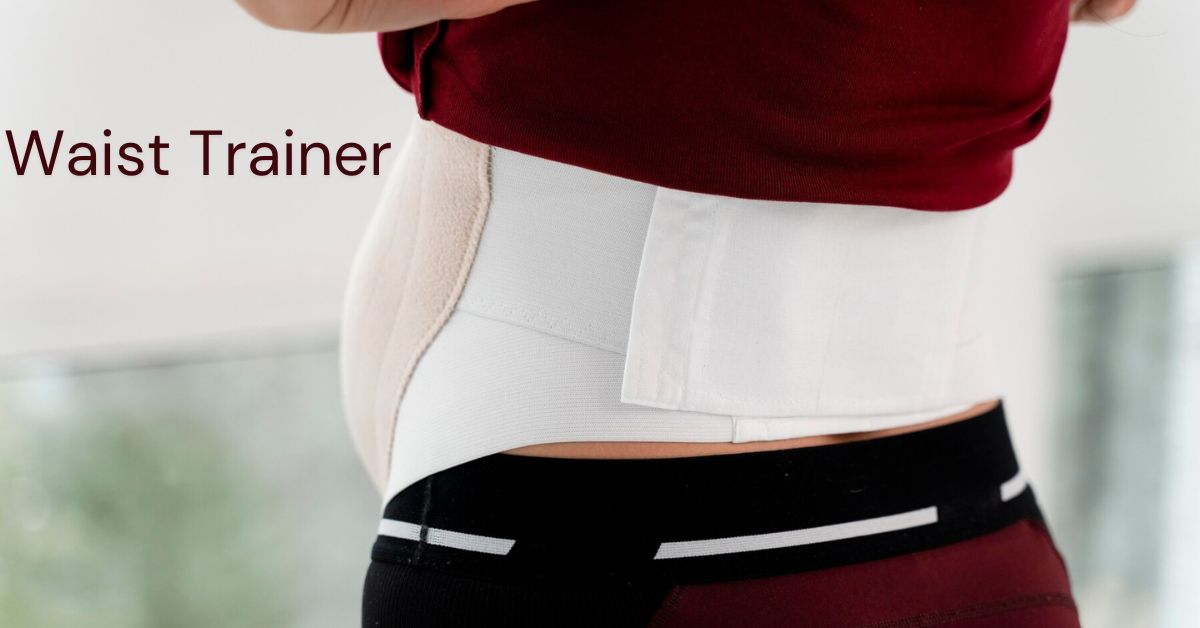Waist trainers have surged in popularity, thanks in part to celebrities and social media influencers. But what exactly are they, and do they really work? A waist trainer is essentially a high-compression shaping garment designed to slim the waistline and give the appearance of a more defined hourglass figure. Whether you’re looking to improve posture, boost confidence, or slim down for a special event, waist trainers offer a quick fix. But are they safe? Let’s dive into the world of waist trainers to discover what they’re all about.
Understanding How Waist Trainers Work
Waist trainers work primarily through compression. When worn, they cinch the waist tightly, reshaping the midsection into a more defined form. This instant shaping effect is often the main draw, but waist trainers also affect your posture, encouraging a straighter back and reduced slouching. However, it’s important to understand that waist trainers do not burn fat; they simply redistribute it temporarily.
Compression and Shaping: The key mechanism behind waist trainers is compression. By tightly squeezing the midsection, the garment molds the body into a slimmer silhouette.
Effects on Posture: Waist trainers also act as a brace, which can help improve posture by keeping your back straight. This can be particularly helpful for those who sit for long periods.
YOU MIGHT ALSO LIKE: Introduction to IMX.to Fashion Kingdom: A Guide
Types of Waist Trainers
Choosing the right type of waist trainer can make all the difference. There are several styles, each with its own specific uses.
Everyday Waist Trainers: Made for daily wear, these trainers are generally lighter and more comfortable. They’re perfect for wearing under clothes to achieve a slimmer look throughout the day.
Workout Waist Trainers: Designed specifically for exercise, these trainers are usually made from flexible material that allows for more movement. They help maximize sweat during workouts, enhancing the feeling of effort and results.
Steel-Boned Corsets: The most rigid type, steel-boned corsets provide maximum shaping and are often used for more dramatic transformations. They’re not recommended for beginners due to their restrictive nature.
Benefits of Using Waist Trainers
Waist trainers come with several benefits, but it’s important to weigh these against the potential risks.
Improved Posture: By promoting a straighter back, waist trainers can help you develop better posture over time. This can be particularly useful for office workers or anyone who spends a lot of time sitting.
Instant Slimming Effect: The most obvious benefit is the instant reduction in waist size, providing a smooth, curvy silhouette that can boost your confidence in any outfit.
Boosted Confidence: Feeling good in your own skin can work wonders for your confidence. Waist trainers give you a noticeable transformation, often leading to a positive impact on self-esteem.
Potential Risks and Concerns
While waist trainers can offer short-term benefits, they’re not without risks. Prolonged or incorrect use can lead to health issues.
Breathing and Digestive Issues: Waist trainers can compress your lungs and diaphragm, making it harder to breathe deeply. They can also put pressure on your stomach, leading to acid reflux or other digestive discomforts.
Impact on Internal Organs: Prolonged wear can shift internal organs, which may affect bodily functions. It’s crucial to use waist trainers responsibly to avoid long-term damage.
Choosing the Right Waist Trainer
Selecting the perfect waist trainer isn’t just about aesthetics; it’s about comfort, safety, and effectiveness.
Material Considerations: Latex is commonly used for its stretch and compression, but some may prefer cotton or neoprene for more breathability.
Size and Fit: A well-fitting waist trainer should be snug but not painfully tight. Always follow sizing guides and opt for adjustable options.
Adjustability Features: Look for trainers with multiple rows of hooks or Velcro adjustments so you can loosen or tighten as needed.
How to Properly Wear a Waist Trainer
Wearing a waist trainer correctly is crucial to avoid discomfort or injury.
Correct Positioning: The trainer should sit firmly around your midsection, aligning with your natural waist.
Tips for Comfort: Start by wearing your waist trainer for short periods, gradually increasing wear time as your body adjusts.
Waist Training for Beginners
If you’re new to waist training, it’s best to ease into it slowly.
Starting Slow: Begin with 1-2 hours a day and gradually increase wear time. This allows your body to adapt without strain.
Building Up Wear Time: Over a few weeks, you can work up to wearing your waist trainer for 6-8 hours a day if comfortable.
Waist Trainers and Exercise
Adding a waist trainer to your workout can enhance the feeling of effort, but it’s not a magic fix.
Can You Work Out with a Waist Trainer?: Yes, but choose a flexible, workout-specific trainer. Avoid overly tight trainers that restrict movement.
Benefits of Wearing During Exercise: Wearing a trainer during workouts can help you maintain good form and increase sweat, enhancing your perceived workout intensity.
Maintaining Your Waist Trainer
Proper care will extend the life of your waist trainer and ensure it remains effective.
Cleaning and Care Tips: Hand wash with mild detergent and air dry to maintain elasticity. Avoid machine washing, as it can damage the material.
When to Replace Your Waist Trainer: Over time, trainers lose their shape and effectiveness. Replace it when it no longer fits snugly or shows signs of wear.
Common Myths About Waist Trainers
There are many misconceptions about what waist trainers can and cannot do.
Myth vs. Reality: Do They Burn Fat?: Waist trainers do not burn fat or cause long-term weight loss. They only provide a temporary slimming effect.
Debunking Misconceptions: It’s a myth that wearing a trainer alone will give you a flat stomach. A healthy diet and regular exercise are still essential.
Waist Trainers for Special Occasions
Waist trainers can be a great addition to your outfit for special events.
Using for Events and Weddings: They’re popular for weddings, proms, and other occasions where a sleek silhouette is desired.
Quick Shaping for Photoshoots: Waist trainers are often used for photoshoots to create an instant hourglass shape.
Waist Trainers vs. Shapewear
Though similar, waist trainers and shapewear serve different purposes.
Key Differences: Waist trainers focus on compression and waist shaping, while shapewear smooths the entire body.
When to Use Each: Use waist trainers for dramatic waist reduction and shapewear for overall smoothing.
Success Stories and Testimonials
Many users share their experiences with waist trainers, highlighting both successes and challenges.
Real-Life Experiences: Some users report feeling more confident and noticing a temporary waist reduction.
What Users Say About Waist Trainers: While some rave about the instant results, others caution about the discomfort of prolonged use.
Conclusion
Waist trainers offer a quick way to achieve an hourglass figure, improve posture, and boost confidence. However, they should be used cautiously and in moderation to avoid potential health risks. If you’re considering a waist trainer, choose one that fits well, start slowly, and always listen to your body.
FAQs
Are Waist Trainers Safe?
Waist trainers are safe when used correctly and in moderation. Avoid overuse to prevent potential health issues.
How Long Should You Wear a Waist Trainer Each Day?
Start with 1-2 hours and gradually increase up to 6-8 hours, depending on comfort.
Do Waist Trainers Help with Weight Loss?
Waist trainers do not directly contribute to weight loss; they only provide a temporary slimming effect.
Can Men Use Waist Trainers?
Yes, waist trainers are not gender-specific and can be used by anyone looking to shape their midsection.
What Should You Avoid When Using a Waist Trainer?
Avoid overly tight trainers, wearing for extended periods without breaks, and using them as a substitute for healthy habits.
READ MORE: CLICK HERE





